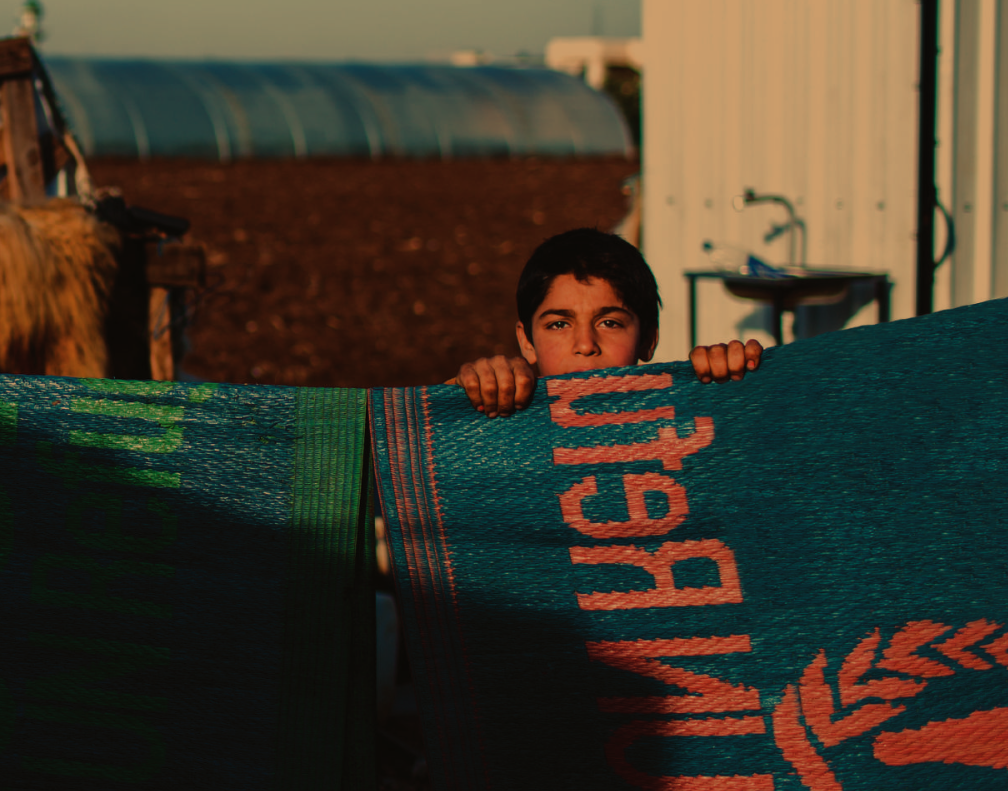Syrian Refugees in Lebanon Pushed Deeper into Poverty, Study Shows
Syrian refugees in Lebanon are more vulnerable than ever, with more than half now living in extreme poverty, and over three quarters living below the poverty line, according to the findings of a major UN study.
Beirut, 15 December 2017
POVERTY ON THE RISE
The Vulnerability Assessment of Syrian Refugees in Lebanon (VASyR), is a yearly study carried out by the United Nations High Commissioner for Refugees (UNHCR), the United Nations Children’s Fund (UNICEF) and the World Food Programme (WFP). The 2017 survey reveals that 58% of households are living in extreme poverty (less than US $ 2.87/person/day), unable to meet survival needs — an increase of 5% since last year. Refugees now have less money for essentials – with average per capita spending now standing at just US $98 per month – US $44 of which is spent on food.
The proportion of households living below the poverty line (less than US $ 3.84/person/day) has also continued to increase, reaching 76% of refugee households in 2017.
“Syrian refugees in Lebanon are barely keeping afloat,” said Mireille Girard, UNHCR Representative in Lebanon. “Most families are extremely vulnerable and dependent on aid from the international community. Without continued support, their situation would be even more harrowing, especially in winter when their struggle is exacerbated by the harsh conditions.”
HIGH DEBT
Borrowing money to buy food, cover health expenses and pay rent is extremely common, with 87% of refugees saying they were in debt. On average, 77% of Syrian refugee households experienced a lack of food or money to buy food during the 30 days prior to the survey.
Although high, these figures reveal an improvement over 2016, when 91% reported borrowing money and 88% reported a lack of food or money to buy food.
LEGAL RESIDENCY DOWN
Only 19% of families reported that all members had legal residency, down from 21% in 2016.
More alarmingly, the share of households with no members having legal residency increased considerably, reaching 55% in 2017. Overall, 74% of surveyed Syrian refugees aged 15 and above do not have legal residency.
BIRTH REGISTRATION
The survey also revealed that only 17% of refugee parents managed to complete all the steps of the birth registration process for their children. The report indicates, however, that higher percentages of families have completed the first two steps of the process – with nearly all families (96%) obtaining a notification of birth from the hospital or midwife, and three quarters obtaining a certificate from the Mukhtar (town leader), which attests to the birth of the child, but does not constitute birth registration.
Just over one third of the children had their birth registered with the local civil registry office of the Nofous, the third step of the birth registration process.
LOW FOOD SECURITY
Food insecurity remained critically high, with 91% of households affected to some degree. While this is an improvement on 2016, the majority of households reported that they had cut spending on food (79%) or bought food on credit (77%).
“While still high, the food insecurity situation has stabilised, reflecting the positive impact that cash-based food assistance has on the most vulnerable refugee households,” explains WFP Country Director Dominik Heinrich. “That said, sustained donor support for 2018 is the only way to ensure that there is no further deterioration nor recourse to harmful coping strategies by vulnerable refugees in Lebanon.”
PROGRESS IN EDUCATION
Significant improvements have been made in school enrolment for children aged 6-14 – with a national average of 70% now enrolled – up from 52% last year. Enrolment rates in the Bekaa Valley nearly doubled in just one year. However, while enrolment rates are up, completion of education remains an enormous challenge – with just 12% of adolescents aged 17-19 having completed their education up to grade 9.
“Needless to say, we are pleased with our achievements and the increasing enrolment. But, what we find deeply worrying is the rising poverty, since it directly impacts children’s possibility of exercising their basic right to education. Additionally, funds keep decreasing, resulting in a re-prioritization of needs and restructured services – not only within education but across all sectors,” Tanya Chapuisat, UNICEF’s representative in Lebanon explains.
SAFETY NET
A range of humanitarian assistance continues to be provided with 71% of respondents saying they received some form of assistance in the previous three months.
Monthly cash-based food assistance by WFP makes up the largest proportion of support, reaching almost 700,000 refugees.
During the colder months, UNHCR’s seasonal unrestricted winter cash programme includes close to 800,000 persons. Furthermore, unrestricted cash safety net support by UNHCR reaches 198,000 of the most severely vulnerable persons (33,000 households) on a monthly basis.
Child-focused humanitarian cash from UNICEF expanded from a pilot covering 50,000 refugee children in the 2016/2017 school year, to 75,000 in the 2017/2018 school year.
BACKGROUND
The 2017 Vulnerability Assessment of Syrian Refugees in Lebanon (VASyR) is the fifth survey of its kind, with researchers having visited some 5,000 refugee families randomly selected from 26 districts across Lebanon.
Since the first survey in 2013, the VASyR has been key in shaping humanitarian aid programmes and revealing social and economic trends.
To download the full report, click here.
MEDIA CONTACTS
UNHCR: Scott Craig, craigs@unhcr.org, +961 71 910 332 / Lisa Abou Khaled, aboukhal@unhcr.org, +961 71 880 070
UNICEF: Blanche Baz, bbaz@unicef.org, +961 76 932 666
WFP: Edward Johnson, Edward.johnson@wfp.org, +961 76 320 761 / Dina El Kassaby dina.elkassaby@wfp.org, +20 101 521 8882

